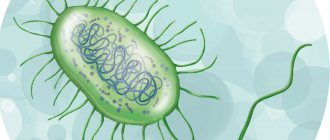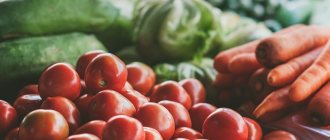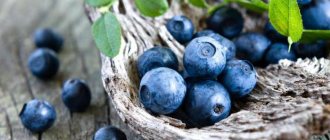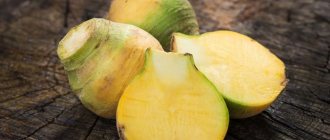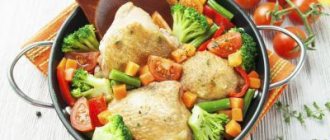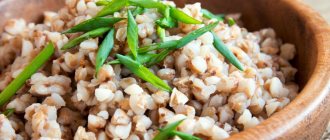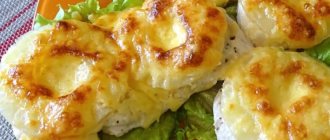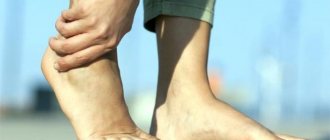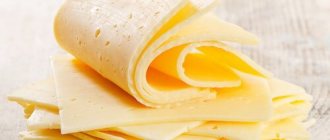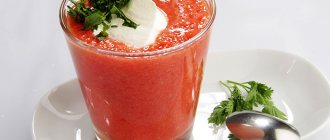Purines are not scary at all
Today, very often, from various channels, we are bombarded with tons of information that purines are terribly harmful substances. Well, we will reassure you: purines are not as scary as they are portrayed to be.
We can say that they are not scary at all - after all, for example, without these substances there would be neither DNA nor RNA, and this alone sounds frightening.
And caffeine is also purine, which for coffee lovers is perhaps the main argument in their favor.
Purines are found almost everywhere: in the cells of our body, in the cells of animals and plants - their quantity is replenished along with the diet every day.
And when cells are destroyed, purines, which cannot, according to all the laws of chemistry, disappear into nowhere, turn into uric acid.
Do you want to be healthy and keep your body in good shape?
Join 1000+ people who receive interesting insider tips and advice on a healthy lifestyle, proper nutrition and training!
No spam, only useful and interesting content!
But even at this stage there is no need to panic: this is a very useful process, as long as there are not too many purines in the body!
At this moment, purines “forget their place” - they begin to accumulate in excess, threatening gout and other problems, instead of protecting the safety of our
vessels.
This is why it is so important to bring the process of purine metabolism back to normal with the help of a therapeutic diet - it is simply impossible to curb these “mechanisms” in any other way!
Purine metabolism is a complex biochemical process in which many enzyme systems take part. Most of the uric acid in the body is formed during the metabolism of nucleic acids, but other routes of its synthesis have been described. In all variants, the most important intermediate is inosinic acid, which subsequently undergoes hydrolysis. The resulting hypoxanthine is converted into xanthine and uric acid under the influence of the enzyme xanthine oxidase. From a biochemical point of view, disorders of purine metabolism represent various types of imbalance between the enzyme systems responsible for the synthesis and transport of uric acid and its precursors.
The content of purines in the body consists of their intake from food and endogenous synthesis. It is believed that the body of an adult healthy person contains about 1000 mg of uric acid. With gout, this figure can increase several times. The content of uric acid in the body is not a rigid and main clinical indicator of the state of purine metabolism. The range of normal values of blood uric acid varies widely, and in men it is in the range of 200-360 µmol/l, in women – 160-340 µmol/day. In healthy people, approximately 750 mg, or 2/3 of the total volume of uric acid, is excreted and synthesized again per day. Of this amount, about 80%, or 600 mg, is excreted by the kidneys, the remaining 20% is excreted through the gastrointestinal tract. According to calculations by P.M. Klimenko et al. (2010), normal uric acid clearance is 5.4-9.0 ml/min [1].
The metabolism of urate in the kidneys is a complex and multi-step process. Filtration of plasma urate occurs in the glomeruli. The urates that enter the ultrafiltrate are almost completely reabsorbed in the proximal tubule and then secreted. Some of the secreted urate is reabsorbed. The process of active secretion of urates is very sensitive to various chemical agents. It is believed that renal secretion of urate is increased by orotic acid, losartan, estrogens, and tetracycline breakdown products. Renal excretion of urate is reduced by ethambutol, thiazides and thiazide-like diuretics, and to a lesser extent by furosemide and acetazolamide [2]. The tendency of thiazides and indapamide to reduce renal excretion of urate and increase its serum concentration makes these drugs contraindicated in gout and hyperuricemia.
When purine metabolism is disrupted, overproduction of uric acid occurs, which is manifested by an increase in its concentration in the blood (hyperuricemia) and urine (hyperuricuria).
CLINICAL VARIANTS OF PURINE METABOLISM DISORDERS
Purine metabolism disorders themselves are not nosological entities, just as various congenital and acquired fermentopathies without clinical manifestations are not diseases. However, diseases associated with disorders of purine metabolism are relatively common in real urological practice, which makes this aspect relevant. Most urologists are well acquainted with the features of urate nephrolithiasis, and at the same time, in most cases, they have absolutely no idea about the existence of other, sometimes more serious, diseases caused by disorders of purine metabolism. Meanwhile, they all occur with varying frequency in urological hospitals, as well as during consultative work.
The most clinically significant consequence of disorders of purine metabolism is an increase in the level of uric acid in the blood - hyperuricemia, which is the main pathogenetic factor of various pathological conditions. Depending on the etiology, hyperuricemia is divided into primary and secondary to any disease.
The clinical consequence of primary hyperuricemia is gout in the broad sense of the term. This includes classic acute microcrystalline arthritis, as well as other types of damage to the musculoskeletal system, and various types of gouty nephropathy, one of which is urate nephrolithiasis, and tophi of various locations, and complications of all these conditions.
It is quite obvious that for a urologist, diseases of the genitourinary system caused by hyperuricemia are of greater interest. In nephrological and general therapeutic practice, the concept of “gouty kidney” was introduced several decades ago to determine kidney damage due to hyperuricemia, which in modern medicine has been transformed into “gouty nephropathy”. Considering the experimentally proven damaging effect of hyperuricuria on renal structures, the term “urate nephropathy” was also proposed. These concepts are generalizing and unite several processes that are quite different in their pathogenesis: acute uric acid nephropathy, urate nephrolithiasis and chronic tubulointerstitial nephritis. Some authors also note the possibility of immune complex glomerulonephritis due to impaired purine metabolism [3].
In urological practice, patients with urate nephrolithiasis are most often encountered. Up to 80% of such patients had an episode of arthritis at least once in their lives, and not necessarily in the classical localization - the first metatarsophalangeal joint. Recently, atypical variants of arthritis, for example, driving, have become increasingly common. In addition, the widespread and uncontrolled use of non-steroidal anti-inflammatory drugs often blurs the clinical picture, increasing the proportion of arthritis with less activity of the inflammatory process. It may be noted that the combination of arthritis and urate nephrolithiasis is not mandatory, but rather characteristic.
The clinical picture of a kidney or ureteral calculus is well known to all urologists, so there is no point in describing it in detail again. However, it should be noted that in the most severe, “malignant” course, along with the formation of urate stones in the lumen of the urinary tract, deposition of uric acid crystals in the renal interstitium is also possible, which is called nephrocalcinosis. Unlike nephrolithiasis, nephrocalcinosis in gout is always bilateral. Nephrocalcinosis does not have any specific symptoms. Clinical manifestations are reduced to the progression of renal failure due to the progression of nephrosclerosis. Nephrocalcinosis is detected in most cases by ultrasound scanning.
Tubulointerstitial nephritis is a characteristic and common variant of gouty nephropathy. However, due to the less vivid clinical picture, it is known mainly to nephrologists and rheumatologists.
In the initial stages of tubulointerstitial nephritis, the pathological process mainly affects the tubules and renal interstitium, so the leading symptom is a violation of the concentration function of the kidneys - polyuria with low urine density (hyposthenuria). Proteinuria does not exceed 1 g/day or is completely absent - it is associated with impaired protein reabsorption by the tubules. Gouty interstitial nephritis is characterized by persistent uraturia, as well as persistent or episodic microhematuria, especially after a respiratory viral infection. In an immunohistochemical study of renal biopsy specimens, some patients with a clinical picture of gouty tubulointerstitial nephritis showed fluorescence of the C3 fraction of complement and IgG, which is characteristic of immune complex glomerulonephritis. This made it possible to identify chronic glomerulonephritis as a separate variant of gouty nephropathy [3].
As gouty tubulointerstitial nephritis progresses, arterial hypertension and nephrosclerosis develop.
Acute uric acid nephropathy (acute gouty kidney) is based on obstruction of the renal tubules by uric acid crystals, which leads to acute renal failure. The disease begins with oliguria. Some patients simultaneously complain of renal colic-type pain and gross hematuria, which may be explained by the migration of large urate crystals through the ureter. High uraturia, which is not typical for acute renal failure of other etiologies, is pathognomonic. The assumption of acute uric acid nephropathy is based on a combination of three clinical signs - highly active arthritis with characteristic localization, a sharp decrease in diuresis and brick-brown urine. The diagnosis is all the more likely if there is a history of hypohydration of any origin - from visiting a bathhouse to inadequate infusion therapy and overdose of diuretics, as well as consumption of significant amounts of meat products and/or alcohol. In the natural course of the disease, oliguria almost always progresses to anuria with a detailed clinical picture of acute renal failure.
The problem of acute uric acid nephropathy is closely related to secondary hyperuricemia. The reasons for increased levels of uric acid in the blood serum are quite numerous and varied. Among them: chronic renal failure, regardless of etiology, obesity, especially high degrees, poorly compensated type 2 diabetes mellitus, dyslipidemia, acromegaly, hypothyroidism, hypoparathyroidism, toxicosis of pregnancy, myeloproliferative diseases, chronic lead intoxication, chronic alcoholism, severe forms of psoriasis, chemotherapy radiation therapy. In most cases, the severity of hyperuricemia in these diseases is small, less often – moderate. Thus, disorders of purine metabolism rarely significantly affect the clinical picture of the disease. However, their presence affects the development of complications and also increases the relative risk of cardiovascular and overall mortality.
The most striking and clinically significant variant of secondary hyperuricemia is “tumor lysis syndrome” (“tumor disintegration syndrome”), which develops during chemotherapy and radiotherapy for lymphoproliferative diseases, less often for tumors of other localizations. A key component of this syndrome, along with hyperphosphatemia and hyperkalemia, is the overproduction of uric acid, leading to the development of acute uric acid nephropathy, often in intact kidneys [4].
DRUG THERAPY FOR DISEASES CAUSED BY DISORDERS OF PURINE METABOLISM
Therapy for purine metabolism disorders consists of several components. A diet limiting foods rich in purines is required. Specific drugs are allopurinol and citrate.
Allopurinol is indicated for gouty tubulointerstitial nephritis, acute uric acid nephropathy, urate nephrolithiasis in combination with hyperuricemia, as well as chemotherapy for malignant neoplasms to prevent the development of secondary hyperuricemia and acute renal failure. The minimum effective dosage is 200 mg/day, the average therapeutic dosage is 300-400 mg/day. Chemotherapy for malignant neoplasms requires high, close to maximum dosages of allopurinol – 600-900 mg/day [2].
Citrate therapy is an integral part of the drug treatment of gouty nephropathy. The effect of citric acid salts on the process of crystal formation in urine is multifaceted. The solubility of uric acid varies significantly depending on the reaction of the medium. In an acidic environment, urates have very poor solubility and easily pass into the solid phase - they crystallize. With a neutral or alkaline reaction, the solubility of these salts increases. The main effect of citrates is the ability to reduce the acidity of urine, which prevents the crystallization of urates and creates conditions for the dissolution of already formed crystals. This is the basis of litholytic therapy. However, with an alkaline reaction of the environment, the solubility of phosphates decreases. The layering of a phosphate film on the urate stone makes the process of further litholysis practically hopeless. This dictates the need for careful monitoring of the urine reaction throughout the course of treatment. In modern conditions, the empirical use of plant materials rich in citric acid and its salts has been replaced by drugs that include chemically pure citrate and a set of test strips for monitoring urine reactions.
In addition to alkalization with citrate, potassium and sodium ions are needed to convert uric acid into a soluble keto form. It is their quantity that determines the “ionic strength of the solution.” The ratio of these ions to each other is also important, because it has been shown that an excess of sodium ions provokes the formation of a calcium “crust” on the stone.
Studies in the 80-90s demonstrated the effectiveness of litholysis of urate stones using citrates in monotherapy on the order of 75-80% [5, 6]. Currently, as a result of improving the technique, the effectiveness of litholysis has been increased to 85-90%, depending on the characteristics of the chemical composition of the stones [1, 7, 8].
In recent years, studies have appeared indicating the advisability of including citrate preparations in multicomponent treatment regimens. In particular, with urate stones of the ureter, especially in its distal third, combination therapy, including citrate and tamsulosin, led to spontaneous passage of 84.8% of stones, which significantly differs from the groups of patients receiving monotherapy with these drugs (68.8% and 58. 8%, respectively), as well as from patients receiving placebo (26.1%) [9].
There is convincing evidence for the effectiveness of the combination of allopurinol and citrate in gouty interstitial nephritis. A twelve-week course of combination therapy, including potassium sodium hydrogen citrate 3 g/day and allopurinol 100-200 mg/day, led to an increase in glomerular filtration rate by an average of 15 ml/min compared with the control group of allopurinol monotherapy. The clearance of uric acid also increased significantly and there was a greater decrease in its level in the blood. Let us note the low dosage of allopurinol. It can be assumed that there is a possible potentiation of the effects of allopurinol and potassium sodium hydrogen citrate. An additional positive consequence should be a reduction in the frequency of side effects of allopurinol, which is a significant limiting factor in the drug treatment of gouty nephropathy. Particularly significant was the increase in creatinine clearance in the initial stages of chronic renal failure. [10]
A more striking effect of citrate on renal function was noted in the treatment of chronic interstitial nephritis caused by hyperuricemia in obese patients [11].
The mechanism of action of citrate is not limited to alkalinization of urine. Citrate is one of the physiological inhibitors of crystal formation. Since urine is normally a supersaturated saline solution, the presence of crystal formation inhibitors in it is a necessary condition for the adequate functioning of the entire urinary system. Hypocitraturia is the most common metabolic abnormality in patients with stone formation. In addition, the chelate properties of the citrate molecule in relation to calcium ions make the citrate ion indispensable in the prevention of recurrence of calcium-containing stones. Citrate + thiazide diuretic is a standard combination for the metaphylaxis of calcium oxalate nephrolithiasis. Moreover, this therapy helps to increase bone density. This may explain the effectiveness of citrates not only in urate, but also in calcium-oxalate nephrolithiasis [12-14].
Due to the widespread use of EBRT and percutaneous nephrolithotomy, citrate therapy began to be actively used both before and after the procedure for 3-4 weeks. Taking citrate before DLT allows you to loosen the surface and structure of the stone, which increases the success of stone crushing with less trauma to the kidney. Long-term use after the procedure promotes accelerated clearance of stone fragments and prevents recurrence of lithogenesis.
Along with the mechanisms of action described above, citric acid salts additionally have antiseptic, cytoprotective and metabolic effects, which can also be used in clinical practice. In particular, Strassner C. and Friesen A. reported the disappearance of candiduria in 16 out of 18 patients during citrate therapy, which is likely due to a change in urine reaction [15]. The conclusion about the cytoprotective effect of citrate was made based on the successful attempts of Brühl P. et al. use it to prevent chemical injury to the bladder mucosa during therapy with drugs from the oxazaphosphorine group - cyclophosphamide and ifosfamide [16] (in modern oncological and nephrological practice, a drug from the group of mucolytics mesna, which has virtually no effect on acid-base balance, is used for this purpose). There are also reports of the use of citrate to correct acidosis due to ureterosigmostomy [17].
The main difficulty in citrate therapy for urate nephrolithiasis is selecting an adequate dosage of the drug. N.K. Dzeranov, who has studied and developed this aspect for many years, recommends starting with prescribing a diet and assessing the urine reaction for 5 days at a strictly defined time of day. Based on the obtained average urine pH values, the initial dose of the drug and, most importantly, its distribution throughout the day are determined. After 5 days of treatment, the average urine reaction is determined again at a strictly similar time of day and, if necessary, the dosage of the drug is adjusted [18]. “Interactive”, that is, in real time, changing the dosage of citrate is ineffective and even unsafe, as it leads to pH fluctuations, which can cause phosphate crystallization.
Since citrate is normally present in the body, drugs based on it are practically free of toxicity. However, there are clinical situations where the use of these drugs requires caution. The use of citrate mixtures is undesirable for acute uric acid nephropathy and, in general, for acute renal failure of any etiology. The limiting factor is not citration as such, but potassium, the removal of which is difficult in this clinical situation. For acute uric acid nephropathy, it is advisable to administer a 4% sodium bicarbonate solution, saline solution, etc. in combination with loop diuretics. It is necessary to maintain diuresis at a level of at least 100-150 ml/hour, urine pH at least 6.5 [3, 4].
In severe circulatory failure, the limiting factor is the increased intake of sodium into the body. Sometimes acetazolamide is preferable in this situation. This drug from the group of diuretics strongly, and most importantly, uncontrollably alkalinizes the urine, which makes it uncompetitive compared to citrate in the drug therapy of urate nephrolithiasis. However, acetazolamide is practically the only way to increase urine pH without resorting to the introduction of salts, which is extremely undesirable in conditions of severe heart failure.
Thus, drug treatment of patients with disorders of purine metabolism is a complex and multifaceted problem that requires an interdisciplinary approach.
Summary:
The article discusses the main clinical variants of purine metabolism disorders encountered in urological practice. The pathophysiology of purine metabolism disorders is briefly reflected. All clinical variants of gouty nephropathy are considered, including features of pathogenesis and clinical manifestations. The article discusses in detail the main approaches to drug therapy for these conditions, with an emphasis on specific citrate therapy. The available literature on this issue is analyzed. The possibilities of using citrate both in monotherapy and in combination with other drugs have been demonstrated. Indications and contraindications for the use of these drugs have been determined.
LITERATURE
1. Klimenko P.M., Chabanov V.A., Akinshevich I.Yu. Possibilities of conservative treatment of patients with urate nephrolithiasis. // News of medicine and pharmacy. 2010. No. 3. P.5-7.
2. Federal guidelines for the use of drugs (formulary system). Issue X. 2009. Edited by Chuchalin A.G., Belousov Yu.B., Yasnetsov V.V. Moscow. JSC RIC "Man and Medicine".
3. Nephrology. Guide for doctors. Edited by I.E. Tareeva. Moscow. Medicine. 2000. 688p.
4. Nephrology. National leadership. Edited by N.A. Mukhina. Moscow. GEOTAR-Media. 2009. 716 p.
5. Chugtai MN, Khan FA, Kaleem M., Ahmed M. Management of uric acid stone. // J Pak Med Assoc. 1992 Jul;42(7):153-5.
6. Petritsch PH Uric acid calculi: results of conservative treatment. // Urology. 1977 Dec;10(6):536-8.
7. Eliseev M.S., Denisov I.S., Barskova V.G. Use of Uralit-U citrate in patients with gout and nephrolithiasis. // Modern rheumatology. 2012. No. 3. P.13-15.
8. Pasechnikov S.P., Mitchenko M.V. Modern aspects of citrate therapy for urolithiasis. Experience with the use of the drug Uralit-U. // Men's health. 2007. No. 3. P.109-113.
9. El-Gamal O., El-Bendary M., Ragab M., Rasheed M. Role of combined use of potassium citrate and tamsulosin in the management of uric acid distal ureteral calculi // Urological Research June 2012, Volume 40, Issue 3, pp. 219-224.
10. Saito J., Matsuzawa Y., Ito H., Omura M., Ito Y., Yoshimura K., Yajima Y., Kino T., Nishikawa T. pЈe alkalizer citrate reduces serum uric acid levels and improves renal // Endocr Res 2010;35(4):145-154.
11. Saito J., Matsuzawa Y., Ito H., Omura M., Kino T., Nishikawa T. Alkalizer Administration Improves Renal Function in Hyperuricemia Associated with Obesity. // Japanese Clinical Medicine 2013:4.
12. Butz M. Oxalate stone prophylaxis by alkalinizing therapy. // Urologe A. 1982 May;21(3):142-6.
13. Ito H. Combined administration of calcium and citrate reduces urinary oxalate excretion. // Hinyokika Kiyo. 1991 Oct;37(10):1107-10.
14. Berg C., Larsson L., Tiselius HG Effects of different doses of alkaline citrate on urine composition and crystallization of calcium oxalate. // Urological Research February 1990, Volume 18, Issue 1, pp 13-16.
15. Strassner C., Friesen A. Therapy of candiduria by alkalinization of urine. Oral treatment with potassium-sodium-hydrogen citrate. // https://www.ncbi.nlm.nih.gov/pubmed/7498850
16. Bruhl P., Hoefer-Janker H., Scheef W., Vahlensieck W. Prophylactic alkalization of the urine during cytostatic tumor treatment with the oxazaphosphorine derivatives, cyclophosphamide and ifosfamide. // Onkologie. 1979 Jun;2(3):120-4.
17. Sasagama I., Nakada T., Ishgooka M., Kubota Y., Sawamura T. Effect of standardized mixture of potassium and sodium citrate and citric acid (Uralit-U) on the correction of postoperative acidosis in patients who suffered uriterosigmostomy. // Nephron 1994;66:477-478.
18. Dzeranov N.K., Rapoport L.M. Litholytic therapy. Practical recommendations. Moscow. LLC "Informpolygraph" 2011. 16 p.
| Attached file | Size |
| 346.13 kb |
‹ Molecular genetic disorders as criteria in the differential diagnosis of rare kidney tumors Up Nocturia: modern gender aspects of epidemiology, pathogenesis and diagnosis ›
Diet and important details
Be prepared to redistribute the number of meals: instead of the usual breakfasts “on the fly” and dinners “to the fullest”, you will have 4 meals a day, complete and balanced.
You will have to give up foods that contain a large amount of purines and oxalic acid - but we will return to this later, do not rush to be sad about a meager diet.
As for the cooking process, remember: the “first” broth for poultry and fish is not the best assistant in the fight for health.
You need to boil the meat in a large amount of water, discarding the first broth without regret.
Indications for use.
Therapeutic diet No. 6 according to Pevzner is recommended for patients with gout, people with urolithiasis who form stones from uric acid (urates) or oxalic acid stones (oxalates). The same diet is prescribed for uric acid diathesis, cystinuria and other diseases for which restriction of meat and fish products is recommended. This diet normalizes metabolism, reduces the formation of uric acid and its salts in the body, shifts the urine reaction to the alkaline side, and normalizes intestinal function.
Nutritional features.
Characterized by a significant limitation of foods that contain purines, oxalic acid, as well as a limitation of salt and an abundance of alkalizing foods, that is, vegetables, fruits, milk. It is also recommended to increase the amount of free fluid. The content of proteins and fats should be somewhat limited.
When preparing food, adhere to the usual culinary processing of products. With the exception of processing of meat, poultry and fish. These products must be boiled first. This is necessary because during cooking, 50% of the purines contained in the product go into the broth. When meat, poultry, fish are pre-boiled, then you can prepare stewed, baked, fried dishes from them. Meat and fish dishes should be consumed no more than two to three times a week. In this case, one serving of meat should not exceed 150 g, and one serving of fish should not exceed 170 g.
A split diet is recommended - four to six times a day. It is recommended to take fluids between meals and on an empty stomach. The food temperature should be normal.
People with gout are also recommended to arrange fasting days for themselves once a week. They can be dairy, fruit, curd, kefir. On a fasting day, you need to drink at least 2.5 liters of fluid, unless there are contraindications from the cardiovascular system. Treatment with fasting days is contraindicated for this diagnosis.
Chemical composition and energy value.
Proteins – 80-90 g, fats – 80-90 g, carbohydrates – 400 g, salt is consumed in reduced quantities.
The calorie content of the diet is 2600-2900 kcal.
| Product table | |
| Authorized products | Prohibited Products |
| Bread and bakery products | |
| Any bread made from 1st and 2nd grade flour, wheat, rye, bran. | |
| Milk and dairy products | |
| Milk, kefir, cottage cheese, fermented milk products, dishes made from them. | Salty cheeses. |
| Soups | |
| Vegetarian soups, borscht, cabbage soup, vegetable potato soups with the addition of cereals. | Soups with meat, fish and mushroom broths, sorrel and legume soups. |
| Meat and meat dishes | |
| Lean meats and poultry. Initially in boiled form, then they can be used to prepare stewed, baked, fried dishes (read above). | Meat dishes from frozen meat, canned meat, liver, kidneys, sausage, smoked meats. |
| Fish and fish dishes | |
| Low-fat fish, pre-boiled before cooking. | Fish dishes from frozen fish, canned fish, smoked and salted fish. |
| Cereals and pasta | |
| Any grains in moderation. | Dried cereals, excluding hulled rice and hulled, milled wheat. |
| Vegetables | |
| Any vegetables except legumes. | Legumes, salted and pickled vegetables. |
| Eggs and egg dishes | |
| Eggs in any culinary preparation, but no more than one per day. | |
| Fats | |
| Butter. | Beef, lamb and cooking fats. |
| Snacks | |
| Salads from fresh and pickled vegetables. | Spicy, salty and spicy snacks. |
| Berries and fruits | |
| Fruits and berries should be included in the diet in increased quantities; they can be raw or in any culinary preparation. To improve the alkaline environment in the body, citrus fruits such as lemon and grapefruit are included in the diet. | Raspberries, cranberries, dried fruits, except prunes. |
| Sweets | |
| Marmalade, honey, marshmallow, jam. | Chocolate, cookies, confectionery prepared with salt or powdered sugar. |
| Beverages | |
| Weak tea, tea with milk or lemon, kefir, juices, wheat bran decoction. Dairy and fruit jelly, alkaline mineral waters. | Strong tea, coffee, cocoa, alcoholic drinks. |
What will be on your menu?
Let's start with the product that is the head of everything - this diet allows moderate consumption of bread products made from first- or second-grade flour, but only if it is yesterday's product, slightly dried by time.
It’s great if the bread is unleavened, unleavened, and even better – enriched with a dry protein mixture.
At lunch, you can treat yourself to a light diet soup with the addition of vegetables that are allowed by the diet and cereals. And if you love milk soups, we have great news for you!
They fit easily into your diet if you cook them with vegetables and pasta.
We have already figured out how to cook meat and fish as part of the new diet. It remains only to clarify that you can eat such a dish 3-4 times a week, in small portions of 150 g.
As for eggs, you can eat one a day, but nutritionists recommend limiting yourself to half. In general, the protein portion of this diet is concentrated in dairy products that do not contain salt.
Diso Nutrimun, a protein mixture certified by nutritionists, during the cooking process .
To accurately calculate the correct ratio of protein in the mixture to proteins obtained from products, you must consult your doctor.
Or, as an option, quickly get a recommendation from specialists at the National Association of Clinical Nutrition.
Gout
Gout is a chronic progressive disease characterized by impaired purine metabolism, excess uric acid in the blood, deposition of uric acid salts in tissues and recurrent inflammation of the joints (arthritis). This disease predominantly affects older people, but can often occur in middle-aged and even young adults. Men get sick much more often than women.
The causes and mechanisms of development of gout are not yet well understood. It has been established that the formation of the pathological process largely depends on the high level of uric acid in the blood (the medical term is hyperuricemia). The causes of hyperuricemia that cause gout are different. They may be increased formation of uric acid in the body; decreased intensity of excretion of uric acid and its salts in the urine; increased intake of purines from food into the body, during the metabolism of which uric acid is formed.
Purine metabolism is one of the important mechanisms for the formation in the body of a number of very significant plastic substances that perform “construction” functions in the cells of almost all organs. In addition, during the process of purine metabolism in tissues, there is an intensive formation of some biologically active substances - nucleic acids, coenzymes, adenosine phosphoric acids, etc., which play key roles in many redox reactions and synthetic processes.
Thanks to purine metabolism, many intermediate products are formed in the body, including uric acid, sodium urate, which are either removed from the body by physiological “purification” systems - through the kidneys, skin, intestines, etc. - or are used in other metabolic reactions. Their retention in the body for one reason or another contributes to the formation of sometimes severe pathology, a prime example of which is gout.
With gout, the accumulation of purine bases in the body leads to the formation of various sizes of dense nodes from needle-shaped crystals of uric acid and its salts in the membranes of the joints, in cartilage, blood vessels and other tissues. Great importance in the development of the disease is attached to overeating, especially animal protein products rich in purine bases (meat, meat by-products, brains, poultry, fatty fish, etc.), abuse of fatty and fried foods, alcohol abuse, as well as a sedentary lifestyle. Hereditary predisposition plays an important role in the occurrence of gout.
Gout manifests itself in the form of constantly recurring arthritis (usually in the small joints of the foot). In 75% of cases, the joints of the first toe are affected, and less commonly, the ankle and knee joints.
Often the pain syndrome manifests itself in the form of an acute attack of gout . There is severe pain in the affected joint, severe swelling of the joint and redness of the skin over it. One of the doctors of the last century figuratively described the pain of gouty arthritis. “Imagine,” he wrote, “that your joints are clamped in a vice, which, when screwed, compresses them to such an extent that you are no longer able to endure it, - and you will get an idea of rheumatic pain; but turn the screw in the vice again - and before you is a picture of gouty pain.” A painful attack is accompanied by fever, weakness, and general malaise. Movement in the joint becomes impossible. On its own or under the influence of treatment, arthritis slowly subsides over a few days, leaving no consequences in most cases.
The second characteristic symptom of gout is the formation of so-called tophi - nodules of various sizes located in the soft tissues near the joints. It is these tophi that concentrate uric acid salts. Sometimes they open on their own, and a thick white mass is released from them. A quarter of patients with gout develop urolithiasis due to the deposition of uric acid salts in the kidneys. As the disease progresses, persistent deformation of the joints develops, range of motion is impaired, up to complete immobility. For the diagnosis of gout, detection of elevated levels of uric acid in the blood is important. X-rays of the joints reveal a narrowing of the joint space and deformation of the articular surfaces.
In case of an acute attack of gout, complete physical and psycho-emotional rest, a starvation diet for 1-2 days, abundant alkaline drinking and the use of anti-inflammatory drugs are recommended. In case of chronic gout, it is necessary to strictly follow an anti-gout diet . Therapeutic nutrition for gout is aimed at reducing the intake of purine bases from food, a significant amount of which, as noted above, is found in brains, liver, meat of old animals, rich meat soups, sorrel, Brussels sprouts, peas, beans, lentils, strong tea , coffee, cocoa. It should be borne in mind that when cooking foods rich in purines, they pass into the broth in significant quantities (up to 50%). Rich meat and other strong broths turn out to be significant sources of purine bases, and the meat or fish boiled at the same time is accordingly freed from them.
Therefore, meat broths and soups, as well as fried meat and fish, should be excluded
the diet of patients with gout The norm of purines in the daily diet of a gout patient should be no more than 100-150 mg, while the daily diet of a healthy person contains up to 800 mg of purine bases. From the standpoint of reasonable limitation of harmful components in the diet of a sick person, it is undesirable for a patient with gout to frequently include in the diet products whose purine content exceeds 30 mg per 100 g of product (see table). Content of purines in food products (in mg/100g)
| Product name | Purine content | Product name | Purine content |
| Tea | 2800 | Veal | 48 |
| Cocoa | 1900 | Peas | 45 |
| Coffee | 1200 | Beans | 44 |
| Chocolate | 620 | Beef | 40 |
| Sardines | 120 | Kura | 40 |
| Animal liver | 95 | Rabbit | 38 |
| Sprats | 92 | Goose | 33 |
| Herring | 79 | Oatmeal | 30 |
| Pork skinny | 70 | Spinach | 23 |
| Lentils | 70 | Rice | 18 |
| Animal language | 55 | Asparagus | 14 |
| River fish | 48-54 | Wheat bread | 8 |
| Pork is fatty | 48 | Radish | 6 |
Since protein is a factor contributing to the internal formation of uric acid, the amount of protein in food should be limited to 1 g per 1 kg of body weight. In addition, sufficient vitamin supply plays an important role in preventing the development of gout. Vitamins C and P contribute to the dissolution of uric acid and its most complete removal from the body. Accordingly, foods that do not contain purines and uric acid salts or contain very little of them, as well as those rich in the above vitamins, should be included in the diet. These are milk and sour-milk products, cheese, cereals (buckwheat, pearl barley, oatmeal, rice, etc.), fruits (apples, pears, plums, oranges, etc.). Contrary to popular belief, you can also eat tomatoes, cucumbers, lettuce, parsley, and dill - they contain very few purines.
Thus, it is easy to see that for gout, a vegetarian diet is recommended. By the way, in those countries where people eat mainly plant foods, gout is almost unknown. And during periods when there are some restrictions in the population’s diet, the number of gout diseases decreases. It has been proven that for the prevention and treatment of this disease, along with a vegetarian diet, therapeutic fasting (fasting-dietary therapy) is useful.
To remove uric acid from the body, it is recommended to drink plenty of fluids, up to 1.5-2 liters of free liquid per day. You can drink weak tea, fruit, berry, vegetable juices, milk, alkaline mineral water. Strong tea and coffee should be excluded. Excess table salt is harmful. You need to eat unsalted or under-salted food. Physical exercises aimed at developing joint mobility have a beneficial effect on the course of gout. They contribute to less salt deposition in them. Complexes of morning hygienic gymnastics, physical therapy, walking, light jogging, skiing, and, if tolerated, game sports are shown: badminton, tennis, volleyball (for young people), croquet, gorodki (for elderly patients), swimming , a ride on the bicycle. Physical exercises aimed at developing joint mobility contribute to less salt deposition in them and increase the effectiveness of drug treatment. Treatment of gout , including the prescription of an individual diet, drug therapy, physiotherapy and other methods and means of treatment, should be carried out by experienced nutritionists, therapists, and rheumatologists. Union Clinic has everything for timely diagnosis and treatment of gout.
a monograph by Doctor of Medical Sciences, Professor A.L. Ariev was published. "Gout". All our patients can receive this book Contact any administrator.
| Make an appointment | Make an appointment by calling +7 (812) 600-67-67 or filling out the online form - the administrator will contact you to confirm your appointment |
UNION CLINIC guarantees complete confidentiality of your request.
Diso Nutrimoon
Protein for treatment and rehabilitation
An easily digestible, tasteless protein mixture, a source of proteins and amino acids necessary for the body to fight illness, recover from injuries, illnesses and operations.
More details
Next we have vegetables. Your favorite potatoes, carrots and beets, fresh cucumbers, pumpkin and zucchini are acceptable. But it is better to limit greens and green salad leaves or completely exclude them from the diet.
Make vegetable casseroles, purees and soufflés with the addition of the Diso Nutrimun protein mixture - this will help you reach the required quantitative level of the protein component of your diet without overeating.
As for dessert dishes and drinks, the diet gives the green light to fresh berries and fruits; marmalade and marshmallows will sweeten the “pill”.
Without a twinge of conscience, you can prepare milk pudding or jelly, drink fruit juice or berry juice, brew rose hips and snack on dried fruits.
